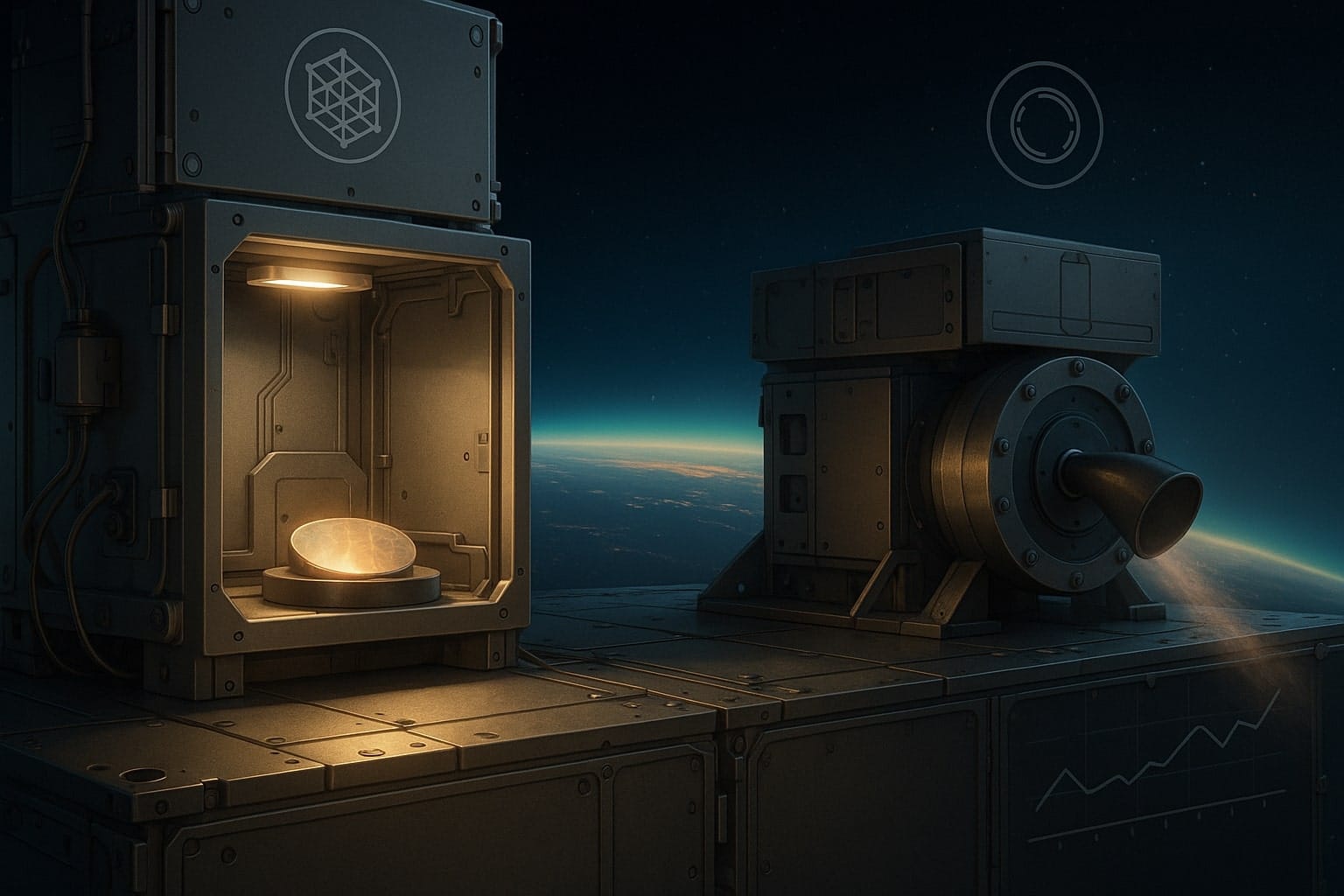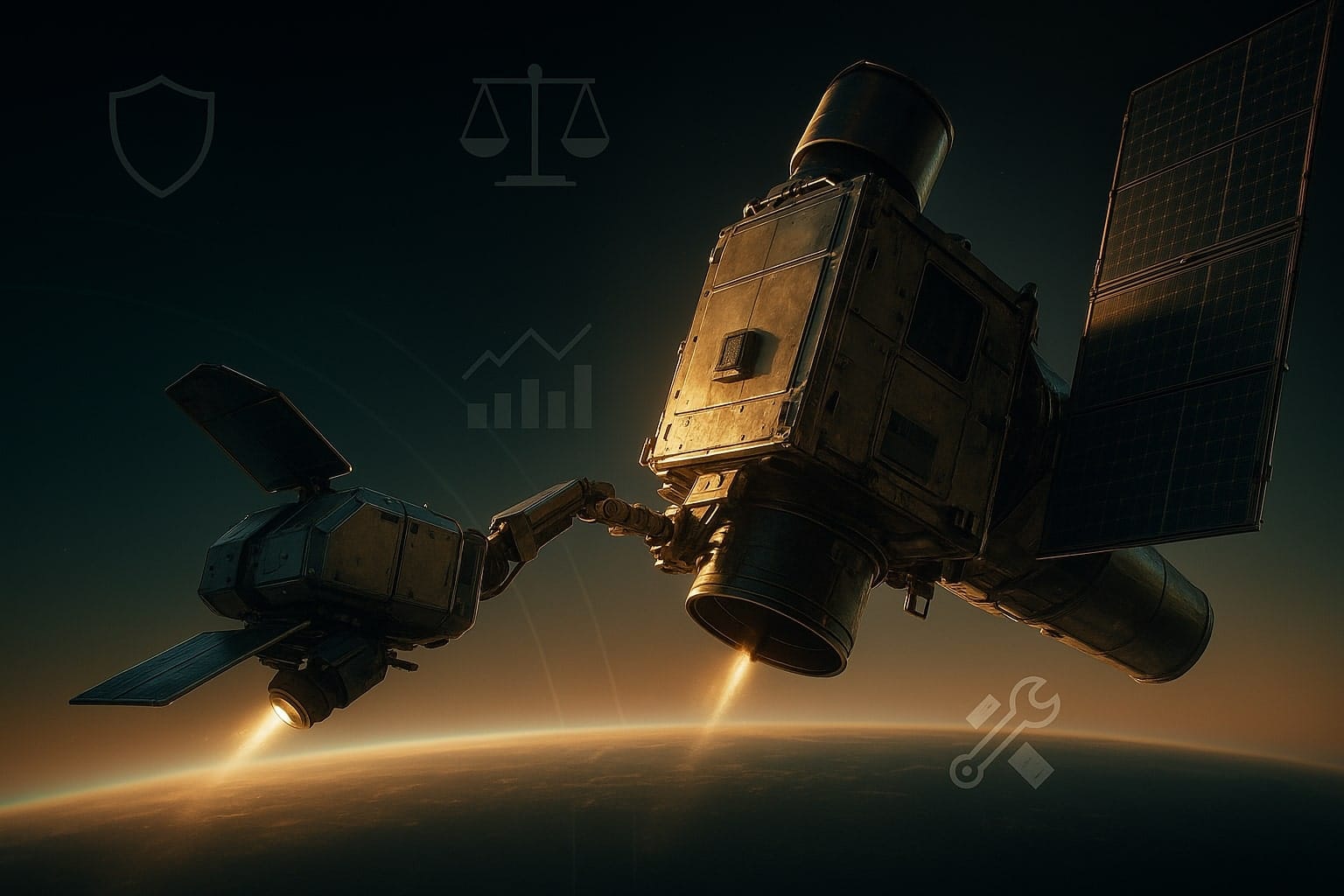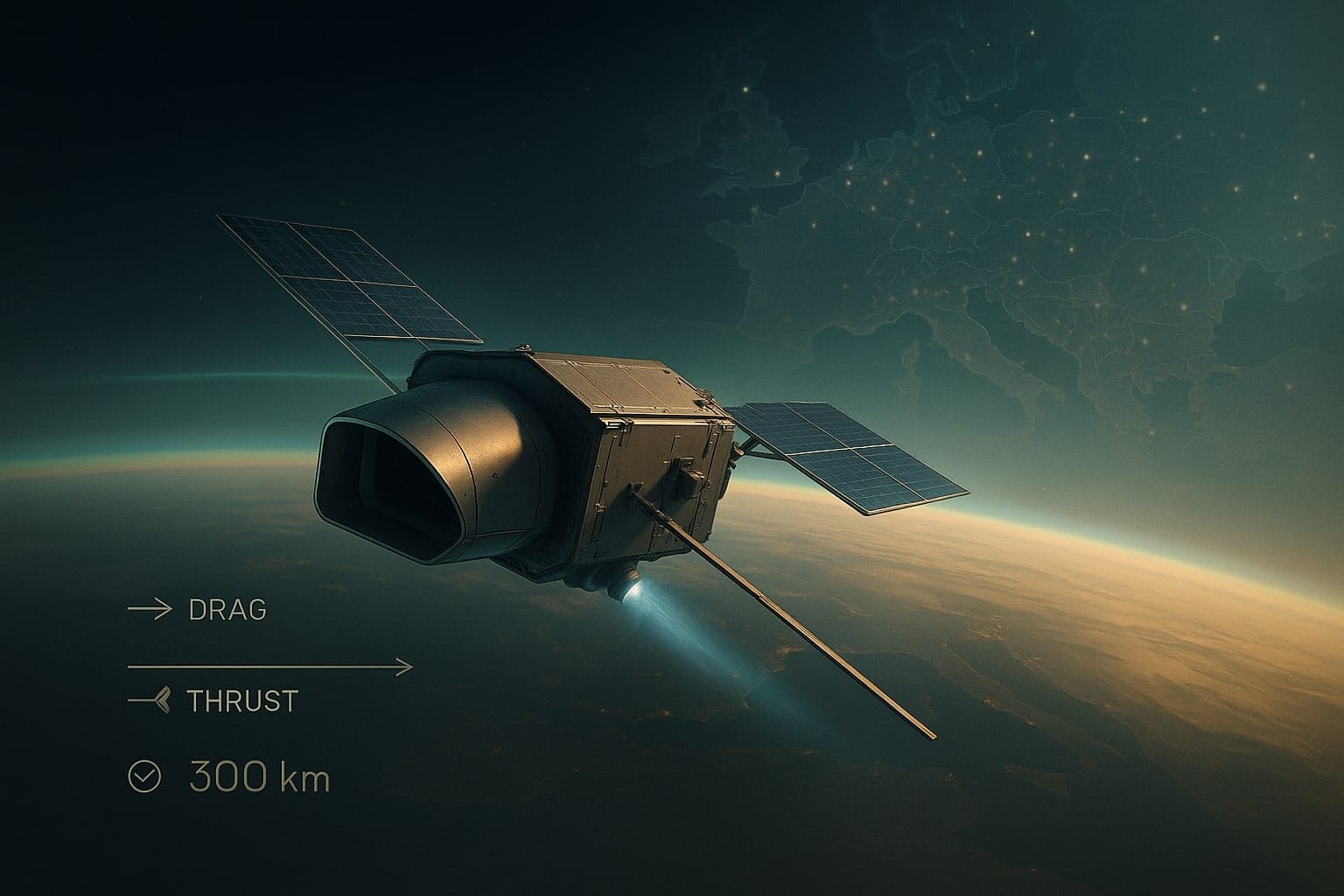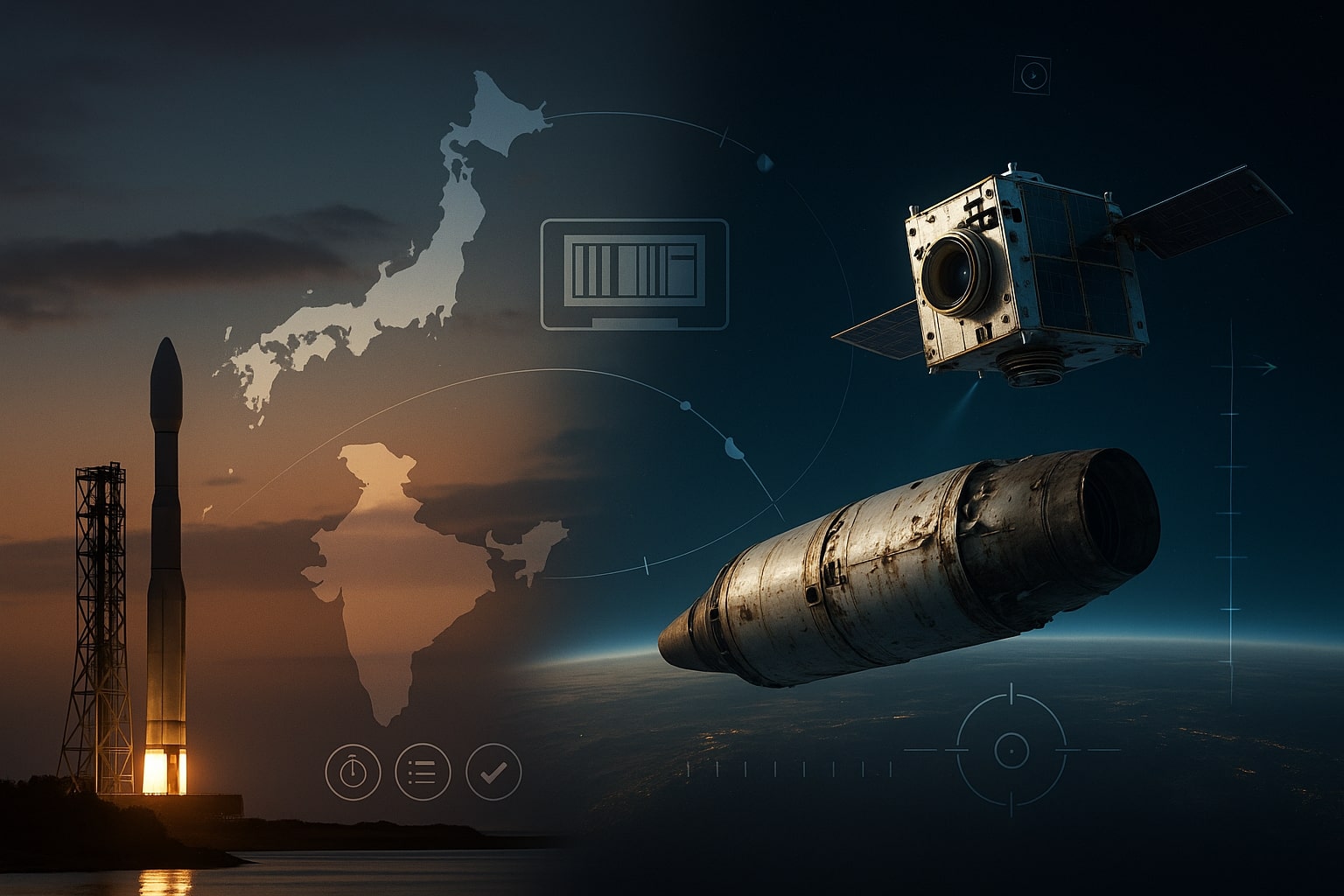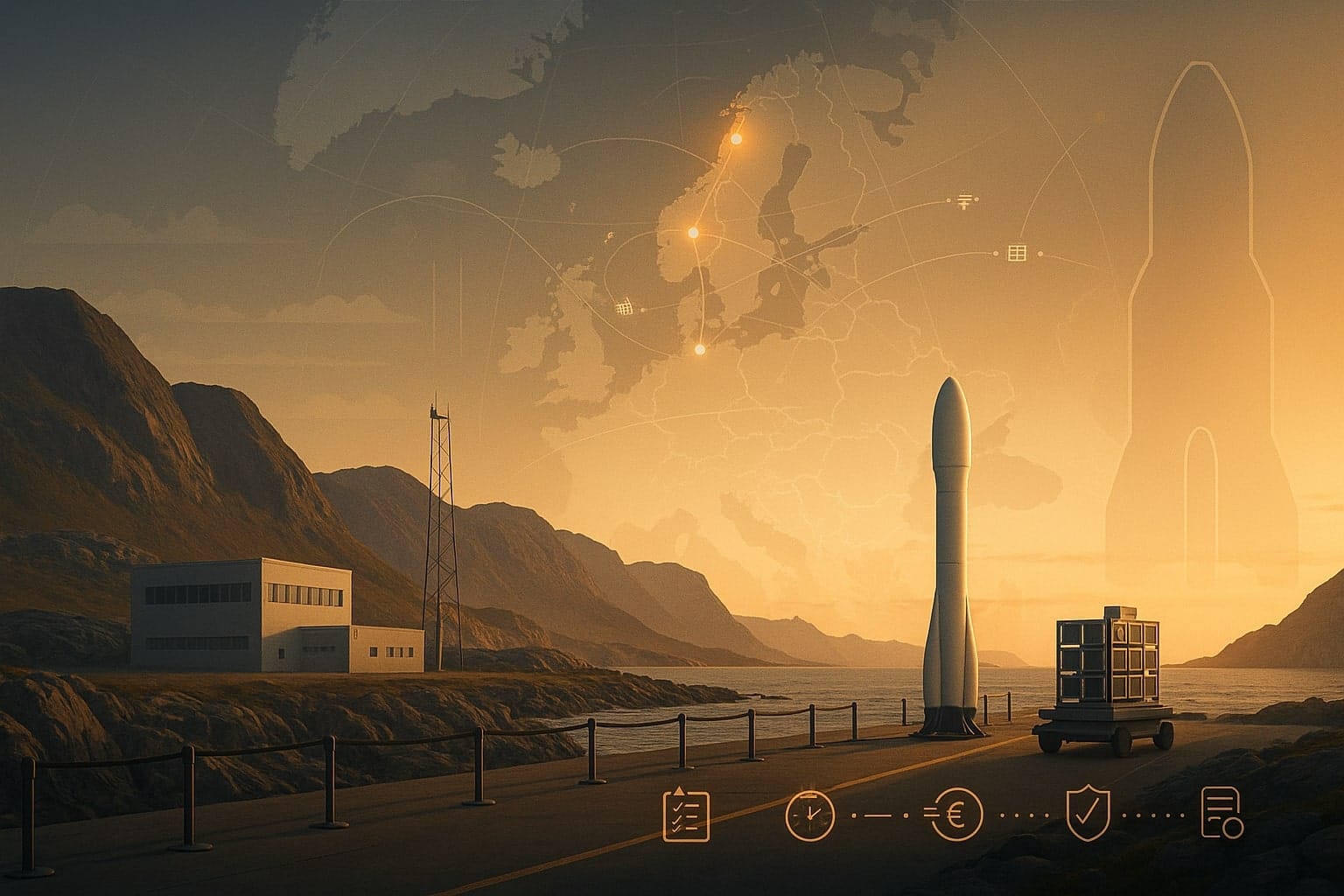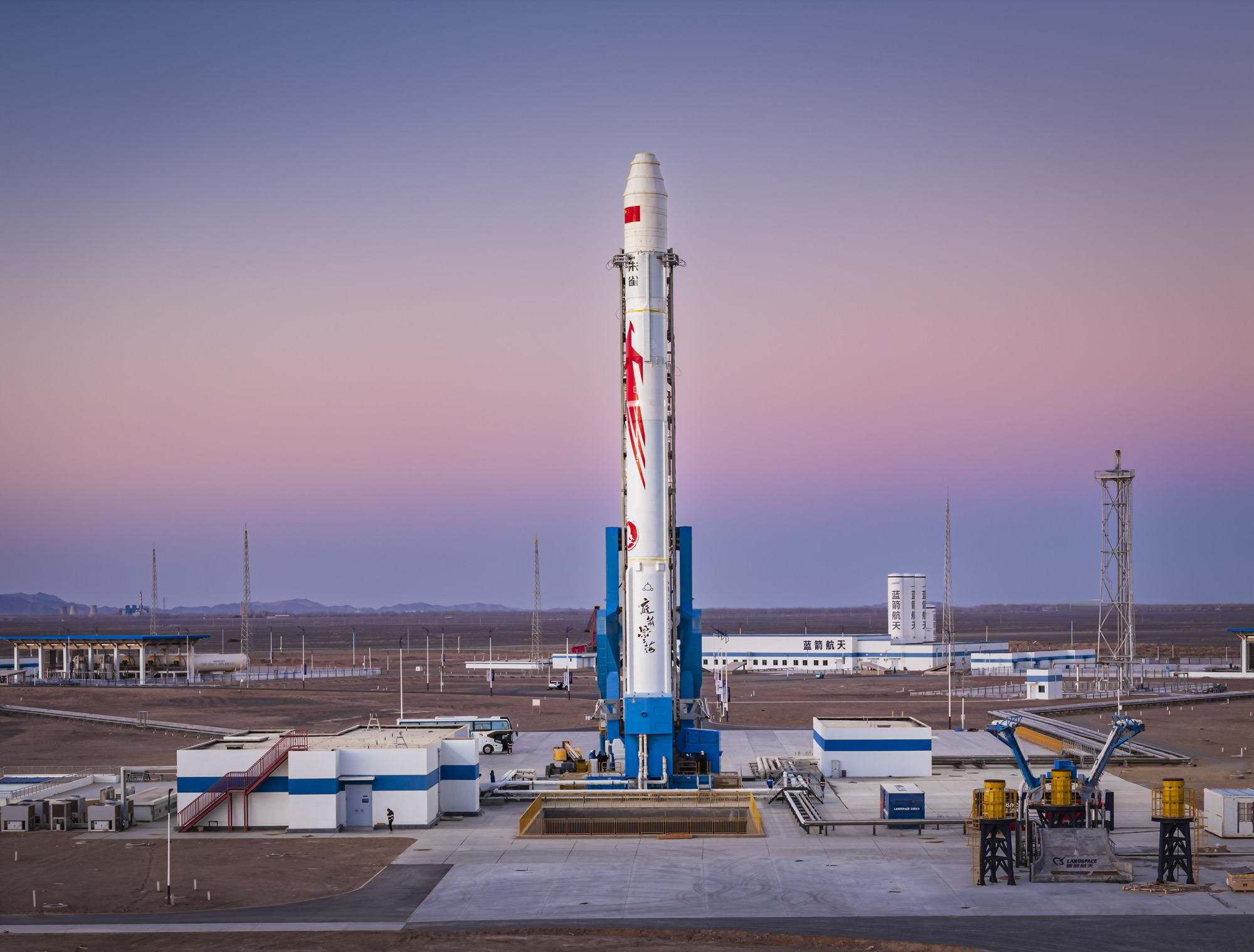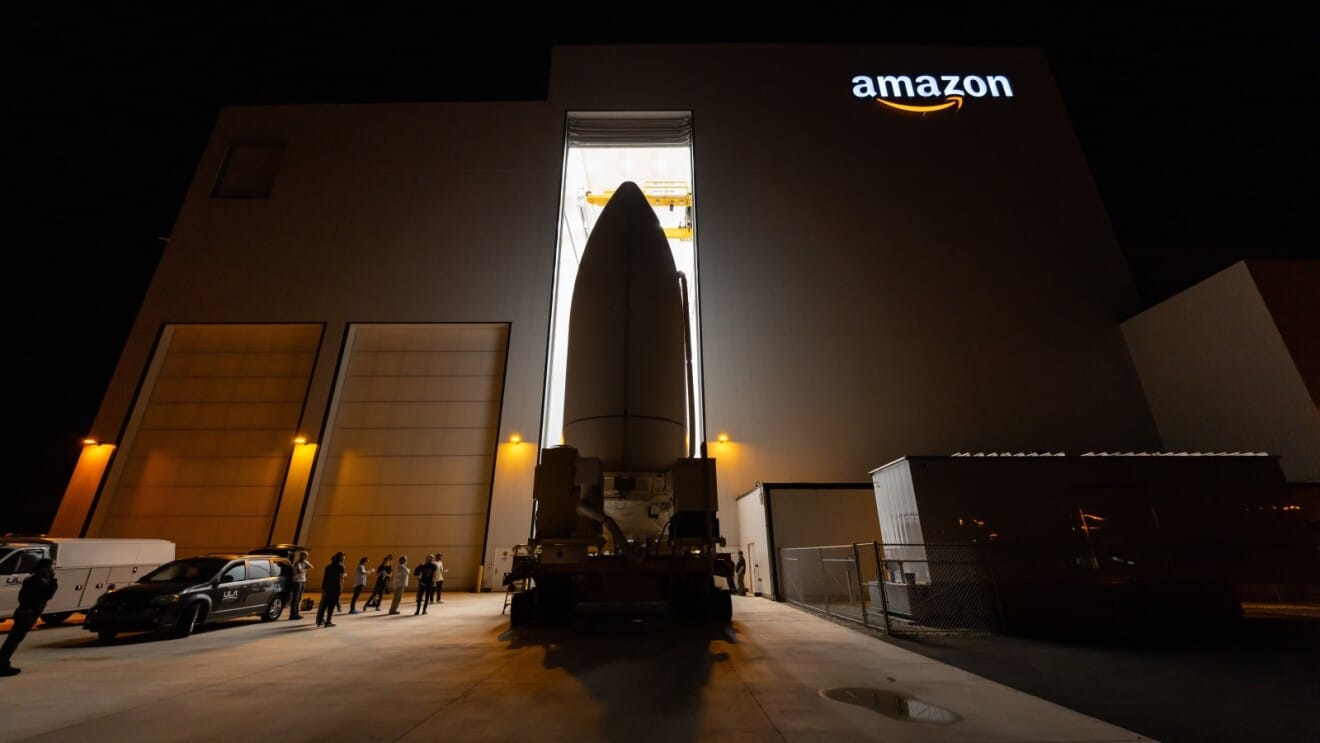Established in 1963, the DSN is often described as NASA’s interplanetary switchboard, linking mission control to spacecraft across the solar system. It consists of three primary complexes – in California, Spain, and Australia – spaced roughly 120° apart in longitude to provide continuous coverage as the Earth rotates. This arrangement means that as a spacecraft’s view of one DSN station sets below the horizon, another comes into sight, ensuring there’s always an ear listening and a voice ready to respond.
Each complex is studded with enormous parabolic antennas – including at least one 70-meter (230 ft) dish that ranks among the largest steerable antennas on Earth. These giants, built in the 1960s and ‘70s, have tracked missions from the Apollo Moon landings to the Voyager “Grand Tour” of the outer planets. Over time, numerous 34-meter (112 ft) dishes have joined them, adding capacity and taking over routine communications so the mighty 70m antennas can focus on the most distant and demanding signals. (The network even doubles as a science instrument at times, using its transmitters and receivers for radio and radar astronomy studies of planets and asteroids.)
From the beginning, the DSN has been international. The first station at Goldstone, California, was soon followed by one near Madrid, Spain (opened in 1964), and another near Canberra, Australia (1965). This global footprint was no accident: NASA partnered with overseas allies so that no matter where a spacecraft is – or which side of Earth it’s over – at least one station can “see” it. Today, the Goldstone Deep Space Communications Complex in the Mojave Desert, the Madrid DSN Complex in the Spanish countryside, and the Canberra DSN Complex in Australia form a triad that keeps NASA in contact with dozens of missions at any given time.
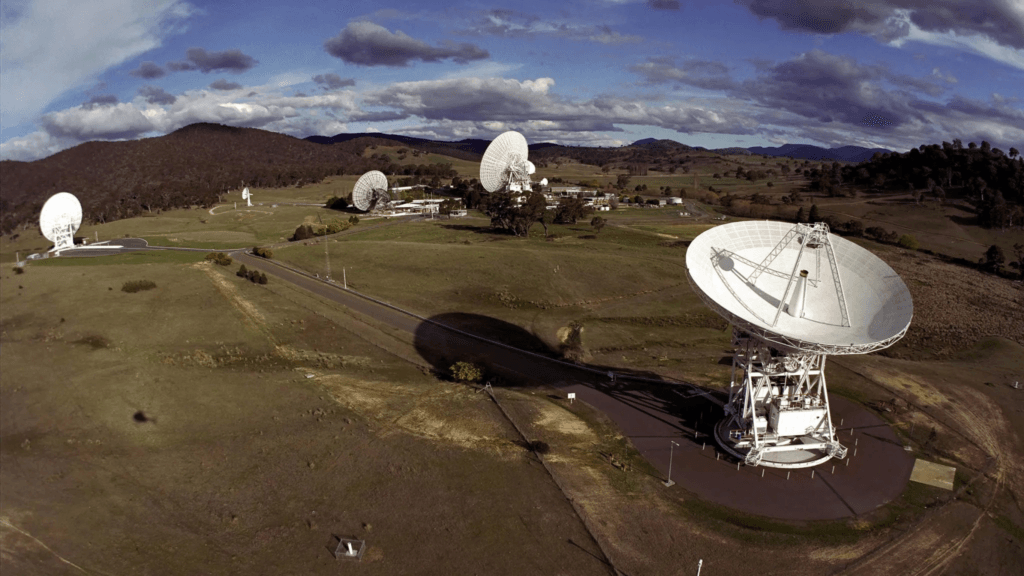
These stations are engineering marvels in their own right. Goldstone’s 70m dish (built in 1966 and expanded in 1988) towers above the desert and can beam a signal clear across the solar system with 400 kW of power. Madrid’s 70m antenna (built in 1974) weighs 8,000 tons and can receive whispers in multiple frequency bands. Canberra’s 70m (DSS-43), the largest dish in the Southern Hemisphere, is the only antenna on Earth that can command Voyager 2 – currently over 20 billion km away and drifting toward the galactic south. In fact, when that aging antenna underwent a much-needed 11-month upgrade in 2020, NASA had to endure an unprecedented silence from Voyager 2, pre-programming the probe to operate on its own until communications could be restored. This episode underscored a simple truth: the DSN is irreplaceable – when one antenna goes offline, an entire mission (or in Voyager’s case, a 45-year legacy of exploration) can be put on hold.
Table of Contents
ToggleAn Earth-Spanning Network at a Glance
To appreciate the DSN’s global reach and capacity, consider the layout of its three complexes and their assets:
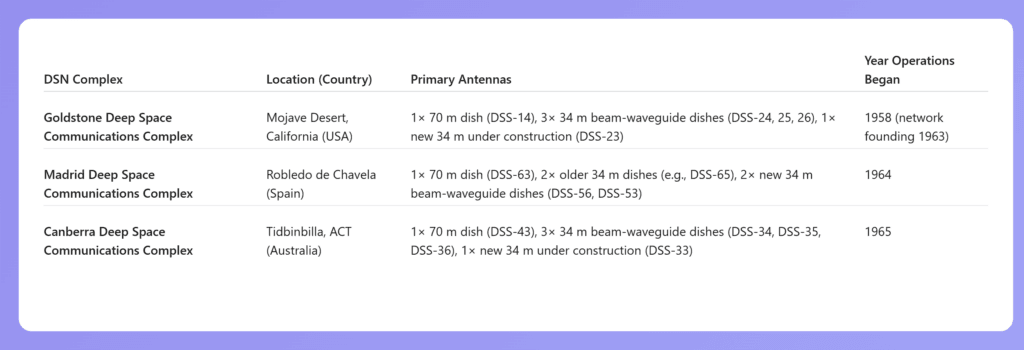
Each site is operated in collaboration with the host nation – for example, Spain’s complex is run by the national aerospace agency INTA, and Canberra’s by Australia’s CSIRO. Together, they handle an enormous workload: on any given day, the DSN is communicating with 30 or more spacecraft ranging from Earth-orbiting observatories out to distant interplanetary probes. This includes not just NASA’s missions, but often those of partner agencies as well – the network has aided international spacecraft like Europe’s Mars missions, Japan’s asteroid explorers, and others, underlining its role as a shared global resource for space exploration.
New Antennas for a New Era: Expanding the DSN
To the casual observer, the DSN’s hulking antennas may look like static monuments, but the network is a living system – one that must continuously adapt to support new missions. In recent years, NASA has embarked on its largest DSN expansion since the Apollo era, driven by a sharp rise in spacecraft clamoring for communications time. The plan, known as the DSN Aperture Enhancement Project, calls for adding six new 34-meter dishes across the three complexes. These modern beam-waveguide antennas come with advanced electronics and multi-band capability, effectively boosting capacity and data throughput for the network.
Half of those six have already come online. In Canberra, two new 34m antennas were completed in 2014 and 2016 (DSS-35 and DSS-36), allowing the retirement of an older 34m and bringing new resiliency to the Southern Hemisphere station. Over in Madrid, a 34m dish designated DSS-56 entered service in early 2021, followed by DSS-53 in February 2022 – both state-of-the-art antennas to handle Europe’s share of the load. And at Goldstone, California, crews have been assembling DSS-23, a shiny new 34m deep-space antenna that had its massive 133-ton dish reflector hoisted into place in December 2024. When DSS-23 becomes operational (expected in 2026), it will be the fourth 34m at Goldstone, bringing the DSN’s total number of functional antennas to 15 globally.
Now comes the newest addition: a fifth dish at Canberra, dubbed Deep Space Station 33. On March 19, 2025 – exactly 60 years to the day since Canberra’s station first joined the network – officials broke ground on the foundation of DSS-33. This antenna will be a 34-meter, multifrequency beam-waveguide dish like its sisters, meaning its sensitive receivers and transmitters will reside in an underground chamber, protected from weather and temperature extremes, with mirrors directing the radio signals up to the bowl of the dish. The design yields both performance and maintenance advantages, and has become the DSN’s workhorse standard. According to NASA, DSS-33’s pedestal and alidade (the rotating mount) will be largely buried in a concrete structure, providing a stable base for the dish to swivel and lock onto targets in the sky. Once this Australian antenna comes online in 2029, it will mark the completion of the current expansion program – “the last of six parabolic dishes” added under the aperture enhancement effort.
“As we look back on 60 years of incredible accomplishments at Canberra, the groundbreaking of a new antenna is a symbol for the next 60 years of scientific discovery,” said Kevin Coggins, deputy associate administrator for NASA’s Space Communications and Navigation (SCaN) program. “Building cutting-edge antennas is also a symbol of how the Deep Space Network embraces new technologies to enable the exploration of a growing fleet of space missions.”
Coggins’ words capture the dual importance of this expansion: it’s not just about adding more dishes; it’s about ensuring the DSN stays ahead of the curve technologically. Each new antenna is built with upgrades in mind. For instance, the Goldstone DSS-23 dish is being outfitted to receive laser communications as well as radio, making it the first of its kind in the network. (More on that in a moment.) And the expansion comes not a moment too soon: the demand on the DSN is at an all-time high, and rising. “The communications infrastructure has been in continuous operation since its creation in 1963, and with this upgrade we are ensuring NASA is ready to support the growing number of missions exploring the Moon, Mars, and beyond,” Coggins noted of DSS-23’s construction.
It’s worth noting that NASA has opted to add capacity while also preserving its legacy antennas. Initially, there were plans to eventually retire the old 70m behemoths (which are costly to maintain) and replace them with arrays of smaller dishes. But engineers have found ways to significantly refurbish and modernize the big dishes – such as swapping out aging transmitters, upgrading drive motors, and reinforcing structures – allowing these icons to continue serving for decades to come. The 70m at Canberra, for example, underwent a major overhaul from 2020–2021 and is now back to reliably conversing with Voyager 2 and other distant probes. This mixed approach of new construction and old upgrades is the DSN’s strategy to cope with current needs while preparing for future ones.

The scale of expansion reflects how much the deep-space portfolio has grown. In the 1960s, the DSN managed a handful of lunar and planetary missions; today, it’s not unusual for 30+ spacecraft to be pinging the network in a single day. Michael Levesque, the DSN project manager at JPL, explained that careful scheduling is now as critical as hardware. “Certain mission events, such as launches, landings, and planetary maneuvers, require constant contact with the DSN, so planning the network’s schedule typically begins 12 to 15 weeks ahead,” Levesque said. The DSN team and mission managers negotiate usage slots to ensure everyone gets support when needed – a complex choreography akin to air-traffic control, but for spacecraft hundreds of millions of miles away. And when multiple high-priority events coincide, the network can even array antennas together (linking their signals) to boost gain, or borrow time on partner facilities like Australia’s Parkes radio telescope, which has been used as an extra “ear” during critical moments.
Despite these measures, the pressure on DSN during peak periods has been intense. A vivid example came during NASA’s Artemis I mission in late 2022, the uncrewed test flight orbiting the Moon. Not only did the Orion spacecraft itself demand near-constant communication beyond low Earth orbit, but ten CubeSats that piggybacked on the mission also phoned home through the DSN. The network had to juggle these newcomers along with its regular clientele (including the James Webb Space Telescope out at L2, which uses DSN for certain communications). “Two major NASA missions launched in the past year are revealing a communications weakness in space,” one report noted in late 2022. “NASA’s Deep Space Network has a limited communications capacity.” In fact, eight of the tiny Artemis CubeSats together consumed 871 hours of DSN tracking – nearly as much as the Orion capsule itself – according to Suzanne Dodd, director of the Interplanetary Network Directorate at JPL. During the Artemis I flight, DSN schedulers even had to reduce contacts with other missions (JWST among them) to free up bandwidth, illustrating that DSN time is a finite and precious commodity. NASA officials have candidly warned that future crewed missions could be endangered if the network doesn’t continue to scale up its capabilities and resilience.
Supporting the Next Wave: Artemis, Mars Sample Return, and More
Why is NASA pushing so hard to expand the DSN now? Look at the missions queued up for the next decade – a wave of ambitious endeavors poised to push human and robotic exploration to new frontiers, all of which will lean heavily on the DSN.
First among them is the Artemis program, which aims to return humans to the Moon and establish a sustained presence there. Artemis isn’t a one-off mission; it entails a series of increasingly complex flights – Artemis II will carry astronauts around the Moon, Artemis III will attempt a crewed landing, and subsequent missions will build a lunar orbiting outpost (Gateway) and surface infrastructure. Throughout these, the DSN will be a critical link. During Artemis I, as noted, the DSN provided continuous coverage for Orion’s 25-day journey around the Moon. It will do the same for Artemis II, handling high-bandwidth transmissions of spacecraft telemetry, video, and voice communications from tens of thousands of miles away. The DSN is also slated to support the Lunar Gateway space station’s communications back to Earth when it’s on the far side of the Moon (out of line-of-sight of Earth ground stations). NASA is even integrating the DSN with its Near Space Network to ensure seamless coverage for lunar missions, effectively creating a communications bridge from the lunar vicinity all the way to deep space antennas on Earth.
Perhaps an even bigger upcoming challenge for the DSN will be the Mars Sample Return (MSR) campaign. This multi-mission effort – a collaboration between NASA and ESA – aims to bring back the rock and soil samples that the Perseverance rover is currently collecting on Mars. Executing MSR will involve at least two new spacecraft: a Mars lander carrying a rocket (Mars Ascent Vehicle) and fetch rover, and an Earth Return Orbiter to capture the sample container in Mars orbit and ferry it home. The coordination required is mind-boggling: NASA will have to track and command a rover and lander on the Martian surface while simultaneously relaying signals from the ascent vehicle launching off Mars, and then guide the orbiter to rendezvous – all across nearly 200 million miles of space. Continuous, reliable communication will be absolutely mission-critical. The DSN will likely run at full throttle during those operations, receiving streams of engineering data (to monitor the health and trajectory of the ascent rocket and orbiter) and perhaps even live video or radar readings of the sample capsule’s capture. It’s no surprise that NASA explicitly cites the need to “support current and future spacecraft and the increased volume of data they provide” as a driving reason for adding new DSN dishes now. By the late 2020s when MSR’s climax unfolds, the network will need every bit of that capacity.
Beyond the Moon and Mars, a host of other deep-space probes will keep the DSN busy. On Oct. 14, 2024, NASA launched the Europa Clipper, a flagship orbiter to investigate Jupiter’s moon Europa. Once it arrives around 2030, Europa Clipper will start flooding Earth with high-resolution images and radar scans through the DSN – possibly requiring bandwidth rivaling the Cassini mission at Saturn, one of the most data-heavy missions in DSN history. In the late 2020s, NASA’s Dragonfly mission will send a rotorcraft lander to Saturn’s moon Titan; during its multi-year trek and eventual exploration of Titan’s surface, Dragonfly will rely on the DSN to send back its findings (imagine video of Titan’s hazy skies or methane-dune landscapes, transmitted across a billion miles). Astronomers are also pressing for new planetary missions, such as a Uranus orbiter and probe in the 2030s, which – if approved – would push communications needs to the edge of current capability given Uranus’ extreme distance. And through all this, the legacy missions will still be running: the Voyagers in interstellar space, New Horizons out past Pluto, Juno orbiting Jupiter, OSIRIS-REx returning samples from asteroid Bennu, not to mention a fleet of Mars orbiters and rovers sending daily weather reports and panoramas from the Red Planet.
In short, we’re entering a golden age of deep-space exploration – but it comes with an unprecedented surge of data. High-definition images, 4K video streams, advanced spectroscopic readings – modern spacecraft are collecting far more than their predecessors, and they’re eager to phone home. As one scientist aptly put it, with more and more data-hungry missions launching, “the need for DSN is only going to increase.” The expansion of the network is not just reactive; it’s a proactive step to future-proof NASA’s communications pipeline against the exciting bottleneck of too much science coming in at once.
Embracing New Technology: Lasers, Automation, and Beyond
Building more dishes is one way to meet the demand. But NASA is also pursuing a technological leap to supercharge deep-space communications: laser-based links, also known as optical communications. For decades, the DSN has communicated via radio waves – primarily in S-band (around 2 GHz) and X-band (8 GHz), with newer use of Ka-band (~32 GHz) for higher data rates. Radio has been reliable but limited in bandwidth, and it requires those huge dish antennas to detect faint signals over vast distances. Laser communications, on the other hand, operate at optical frequencies (in the near-infrared), which can carry far more information per second. A laser beam can, in theory, transmit data many times faster than a radio signal of equivalent power, much like fiber optic internet cables greatly outperform old copper wires.
NASA has been testing this promising technology. In 2021, the agency’s Lunar Laser Communications Demonstration showed that a spacecraft near the Moon could beam data via laser to Earth at broadband speeds. More recently, the Deep Space Optical Communications (DSOC) experiment launched with NASA’s Psyche mission (bound for a metal asteroid in the outer solar system). Even in its early tests, DSOC has achieved record-breaking distances for laser comm and even downlinked an ultra-high-definition streaming video from deep space – something that would have been unthinkable with traditional radio alone. The implications are enormous: future missions might send vast amounts of scientific data – from 3D maps to high-res video – in real time back to Earth, enabling researchers to make discoveries faster.
To support this, the DSN is adapting. The new Goldstone DSS-23 antenna is breaking ground as a hybrid dish, equipped with special mirrors and detectors to pick up laser signals in addition to radio. When DSS-23 comes online, it will be able to communicate with spacecraft using both methods – a crucial testbed for integrating optical links into the network’s daily operations. “Laser and radio communications could even be combined to build hybrid antennas, or dishes that can communicate using both radio and optical frequencies at the same time. That could be a game changer for NASA,” said Amy Smith, the DSN’s deputy project manager. In the future, we might see arrays of smaller optical telescopes next to the big radio dishes at DSN complexes, each method handling different data streams. A spacecraft departing Mars, for example, could send back routine health telemetry via reliable X-band radio (ensuring engineers can always get a carrier signal), while simultaneously dumping gigabits of scientific data via a tightly focused laser beam to an optical receiver on Earth. This hybrid approach would marry the dependability of radio with the high bandwidth of lasers.
Aside from lasers, NASA is leveraging improved electronics and automation to squeeze more capacity from the DSN. Advances in digital signal processing have enabled techniques like Multiple Spacecraft Per Aperture (MSPA) – the ability for one antenna to receive data from multiple spacecraft at once (as long as they’re within the antenna’s beam width). For instance, a single 34m dish at Mars can listen to several active landers or orbiters concurrently, sorting out their different frequency channels – up to four spacecraft at a time with current technology. This has become vital at Mars, where NASA and other nations have a fleet of probes all operating in the same vicinity. The DSN is also improving its scheduling software, exploring machine learning to optimize antenna allocation, and strengthening cybersecurity after a recent review (even public DSN status websites were temporarily taken offline for security upgrades). Every hour of antenna time is precious, so even incremental improvements in how passes are scheduled or how data is compressed can translate to significantly more efficient use of the network.
In the longer term, NASA and its partners are rethinking how to handle communications for an era when hundreds of missions could be exploring space concurrently (including commercial ventures). One concept is to offload some burden via specialized relay satellites. For example, around Mars, NASA already uses its orbiters like MAVEN and Mars Reconnaissance Orbiter as communication relays for surface rovers – rather than each rover directly pinging Earth all the time, they bounce signals through an orbiter which has a more powerful transmitter and continuous line-of-sight to Earth. A similar approach is being planned for the Moon with the LunaNet initiative: a constellation of lunar relay satellites and GPS-like beacons that can service Artemis astronauts, landers, and rovers on the Moon’s surface, funneling their data back to Earth. This could allow the DSN to interact with one high-bandwidth relay in lunar orbit, rather than dozens of individual lunar assets, thereby streamlining the load. Still, even those relay satellites ultimately need to send their data home, and home means the DSN.
Global Collaboration and Strategic Importance
The Deep Space Network may be a NASA facility, but in practice it has always been a global collaboration – and a strategic one at that. The United States chose its DSN host countries carefully in the early 1960s, forging agreements with longstanding allies. Australia, for instance, proudly partnered with NASA from the days of the first satellites; its government saw hosting a deep space station as both a scientific prestige project and a boost to local research capabilities. The Canberra Deep Space Communication Complex is staffed and operated by CSIRO (Australia’s national science agency) on NASA’s behalf, symbolizing decades of friendship across oceans. Spain’s complex near Madrid is similarly operated by INTA, underlining the transatlantic cooperation in space exploration. These host nations benefit through technical know-how, training, and involvement in cutting-edge missions (many local engineers and scientists have built careers supporting DSN operations). In return, NASA secures reliable sites in geographically ideal locations. It’s a win-win model that has endured political changes and stood the test of time – from the Cold War through the Space Shuttle era to today.
That said, maintaining a planetary communications network is a strategic endeavor. The DSN is effectively part of the critical infrastructure of space exploration. It requires continuous funding (the Canberra station alone costs about A$20 million per year to run, funded by NASA) and diplomatic stability. One can imagine the challenge if, say, one host country were unwilling to continue – suddenly NASA would lose a third of its coverage. Fortunately, relations with Australia and Spain remain strong, and both countries take pride in their role in enabling NASA’s missions. In fact, when Canberra celebrated its 60th anniversary as a DSN station in 2025, Australian officials highlighted the hundreds of missions their site has assisted and looked forward to the next generation of discoveries.
The international nature of the DSN also reflects the broader truth that space exploration is a global enterprise. NASA’s network often supports missions from Europe, Japan, and other partners – sometimes out of necessity, sometimes by treaty. For example, when the European Space Agency sent its Huygens probe parachuting onto Titan in 2005, NASA’s Cassini orbiter acted as a relay and the DSN received much of the data; conversely, ESA’s deep-space antennas have occasionally been used to help track NASA missions during critical events. This cross-support maximizes the limited worldwide capacity to communicate with distant spacecraft. Looking ahead, as more nations (and even private companies) launch deep-space probes – from Indian Mars orbiters to potential commercial lunar landers – there is a recognition that coordination and sharing of ground networks may be necessary to avoid conflicts and gaps. The Interplanetary Network Directorate at JPL (which oversees DSN) routinely negotiates link coverage for foreign missions and in turn gets DSN time reimbursed or exchanged. In a sense, DSN is not only NASA’s asset but a part of a de facto international network that spans multiple agencies. The flipside, of course, is that not all players are aligned – China, for instance, has built its own trio of deep-space ground stations (in China, Spain, and Argentina) completely separate from the DSN, due to limited cooperation with the West. If someday humans go to Mars and multiple networks are involved (NASA’s, China’s, maybe others), ensuring interoperability or at least deconfliction will be as much a geopolitical exercise as a technical one.
Finally, the DSN’s strategic importance extends to human spaceflight safety. During Apollo 13’s emergency in 1970, for example, it was radio dishes in Goldstone, Madrid, and Canberra that kept the stranded astronauts in contact when every second and every bit of information counted. As NASA prepares for crewed Artemis missions, officials have been adamant that the DSN must be robust against failures. Redundancies are being built in – like having multiple antennas capable of covering critical phases, and reinforcing the network against cyber threats or natural disasters. One NASA report bluntly noted that astronaut lives could be at risk if the DSN went down at the wrong moment. Thus, investing in the DSN is also an investment in mission assurance and astronaut safety. It’s part of why NASA administrators have sounded alarms to policymakers that this “invisible” infrastructure needs attention and funding just as much as rockets and spacecraft do.
Looking Ahead: A Stronger Signal for the Future
As we stand on the cusp of a new space age – with robots preparing sample returns and humans preparing to venture beyond the Moon – NASA’s Deep Space Network is transforming to meet the moment. The new dish being built in Australia is more than a piece of hardware; it’s a commitment to the future, a tangible sign that the world’s communications pipeline to deep space will be ready for the wonders to come. When DSS-33 in Canberra becomes operational, an engineer will flip a switch and a pristine 34-meter antenna will hear the quiet hum of the cosmos for the first time. Not long after, perhaps it will be receiving the first Martian samples hurtling to Earth, or carrying the excited voices of astronauts as they approach the lunar surface.
Throughout its history, the DSN has often been overshadowed by the flashy missions it supports – but those missions could not succeed without it. The network is the silent partner in every triumph of planetary exploration. It is Armstrong’s voice saying “One small step…,” captured and relayed through an Australian dish. It is Voyager 1’s last image of the Pale Blue Dot, radioed across 4 billion miles. It is the daily handshake with rovers on Mars each morning, and the final farewell signal from a dying probe plunging into a distant planet’s atmosphere. Each of those moments was brought to us by the DSN, faithfully operating in the background.
Now, as NASA doubles down on this critical capability, the DSN is getting the resources and upgrades it needs to continue in that role for decades to come. Geopolitics, technology, and science all intersect in the DSN’s evolution – reminding us that exploring the universe isn’t just about building spacecraft, but also about building the communications bridges back to Earth. The phrase on one set of NASA’s commemorative DSN posters reads: “Our conversation with the universe starts here.” It’s an apt slogan. With a stronger Deep Space Network – more antennas, higher frequencies, lasers, and global partnerships – our conversations with the universe will grow richer and more profound.
In the near future, when you see breathtaking new images from Mars or watch live video from a spacecraft orbiting the Moon, take a moment to think of the giant ears listening intently on three continents. Thanks to the ongoing expansion of the Deep Space Network, the signals will get through. Across unimaginable distances, we will hear and speak to our robotic emissaries – and perhaps one day to fellow humans – out in the depths of space. The new dish in Australia is just coming online, but it’s already pointing us toward a time when no frontier is too far to stay in touch. In the grand odyssey of exploration, the DSN ensures that, no matter how far we go, we never truly go alone.

